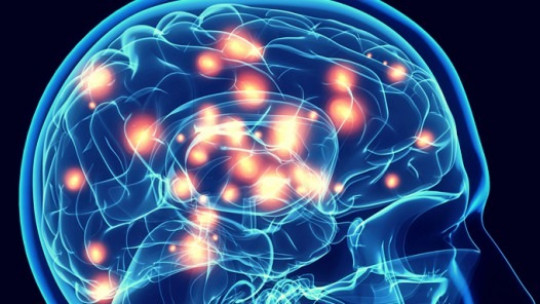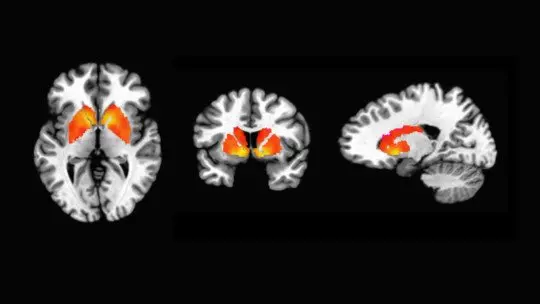There are many causes that can cause cognitive deterioration in a person. Therefore, researchers are looking for new solutions.
Some of the best-known techniques in this regard are cognitive rehabilitation. Below we will be able to discover what its main types and practical applications are, what characterizes this methodology, and what are the advantages it provides over other systems.
What is cognitive rehabilitation?
When we talk about cognitive rehabilitation we refer to a series of techniques created to repair the different brain functions related to cognition such as attention, memory or the use of language, which were previously damaged due to some type of injury or due to the deterioration inherent to some degenerative disease.
In this sense, injuries can be caused by traumatic injuries that cause damage to the brain, whether external, such as an impact, or internal, such as a thrombus that generates a heart attack in one of the veins of the brain. In the case of diseases, they usually refer to dementia, with Alzheimer’s being the most severe type.
Other psychological diseases, such as major depressive disorder, attention deficit hyperactivity disorder, and even schizophrenia, can also cause deterioration in some of the cognitive functions of the subject who suffers from them, so these effects, Likewise, they may be susceptible to being treated using these techniques.
The function of cognitive rehabilitation will be to slow down, stop and even reverse, depending on clinical possibilities, the deficits in brain functions. caused in the person by the aforementioned circumstances. Logically, the program to be applied will depend on the characteristics of the subject as well as the pathology they suffer from.
Therefore, cognitive rehabilitation programs must be individualized. It will be the health professional in question who decides the pattern of techniques to be applied based on the criteria that he determines are appropriate to achieve the greatest possible effect in improving the patient’s cognitive functions.
Cognitive Rehabilitation vs. Cognitive Training
It is important to keep in mind that cognitive rehabilitation is a different concept from cognitive training. Although both are related and can even be applied in a complementary way, the truth is that their definitions are not exactly the same, as they contain important nuances that we must take into account.
In the case of cognitive rehabilitation, we have already seen that it refers to any methodology designed to improve mental functions that have previously been weakened. due to an injury or illness suffered by the person.
On the contrary, when we talk about cognitive training, which refers to the stimulation of certain cognitive functions of a person that have not been damaged, with the aim of achieving an improvement in their performance, greater than that which the individual had. base.
Therefore, we could say that the fundamental difference between cognitive rehabilitation and cognitive training is that the first is used to try to repair the mental consequences derived from neurological damage that the subject has suffered, while the second is intended to improve capabilities that have not been damaged, but simply want to be improved, for whatever reasons.
Fundamentals of cognitive rehabilitation
It is worth asking how it is possible that cognitive rehabilitation is capable of restore, even in part, functions that have been altered by causes as serious as damage to the brain of the subject. The reason why this is possible is precisely thanks to the plasticity of this organ.
Brain plasticity is a quality by which this viscera is capable of restructuring its functions after events such as an injury, so that other neuronal regions assume the tasks of those structures that have been compromised due to a disease or trauma, such as we have already seen.
Therefore, the key to the success of cognitive rehabilitation is that, through these techniques, Different areas of the brain are stimulated so that they “learn” to exercise the functions that at another time were developed by neuronal circuits that have now been destroyed. or altered.
In any case, it is also important to know that not every brain injury necessarily implies damage to cognitive functions. This organ has the so-called brain reserve or cognitive reserve, another extraordinary capacity, through which the brain is capable of assuming certain changes in its structure, either due to an illness or due to aging itself, without generating clinical symptoms.
That would be a case in which cognitive rehabilitation would not be necessary, since the subject, even if he had suffered brain damage, would not have seen his cognitive abilities diminished and therefore it would not make sense to start a process to recover them.
The main types of cognitive rehabilitation
Cognitive rehabilitation, as we saw at the beginning, It is not limited to a single technique, but is a set of them intended for a common purpose. We had already indicated that it would be the doctor and/or the psychologist who would decide which of these tools are the most appropriate to help the patient in question experience improvement, according to their characteristics.
These techniques can be of a very diverse nature. , as we will see below. Some are limited to mere exercises while others require medical infrastructure that is not accessible to all patients. Let’s look at some examples in more detail.
1. Activity and game notebooks
One of the most notable means of cognitive rehabilitation due to its simplicity and effectiveness is the use of exercises through activity notebooks and interactive games. Regarding the notebooks, Different types can be found depending on the cognitive function that we are interested in repairing. such as memory, attention or the use of language.
It is important to select a notebook that includes exercises at the appropriate level for the person who is going to undergo cognitive rehabilitation, since a level below your current capacity will not generate any effect while one that exceeds the margin it can reach can trigger a feeling of frustration that is counterproductive.
In the case of games and video games, we can find everything from physical puzzles that also vary depending on the difficulty, to complete programs available for different gaming platforms, computers or even smartphones, which propose a series of challenges to the user from entertainment.
These tools are especially useful for cognitive rehabilitation, since they attract the patient from the recreational aspect and have very positive effects for improving the mental faculties that are intended to be recovered. Of course, also Those games should be chosen that propose challenges according to the capabilities of each individual.
2. Electrical stimulation
Taking a qualitative leap to a visibly more invasive technique, we find electrical stimulation for cognitive rehabilitation. Specifically, this technique is known as transcranial direct current stimulation, or tDCS.
As its name indicates, The procedure is to apply an electric current to certain brain areas (those that have been damaged).
The objective is to stimulate these regions to reverse the deterioration suffered. However, it is a relatively new technique and there are still certain contradictions about the results obtained, so more research is required to establish conclusions that allow us to know the scope of this method of cognitive rehabilitation.
3. Neurotechnology
Finally, further increasing the complexity of the selected tool, we find the so-called neurotechnology. Is about devices through which a computer can establish a connection with a person’s brain measuring certain parameters and even managing to alter them, through electrical impulses.
This is the most complex form of cognitive rehabilitation. It allows specific programs to be developed to work on the specific damages that an individual has suffered, which is a great advantage over other methodologies, which may be more general. Obviously, it also presents a series of drawbacks, starting with the technological devices necessary for its application.
This condition means that neurotechnology can only be used in very specific places and therefore for people who have sufficient resources to be able to afford such extraordinary treatment today.
Fortunately, Technology advances at a frenetic pace and that also means a reduction in production costs so it may be that in the future all people with brain damage will be able to easily access cognitive rehabilitation based on neurotechnology.









